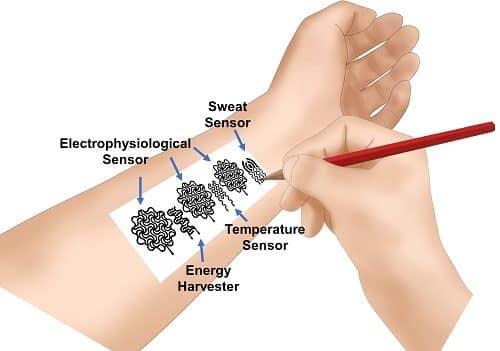The challenges posed by health monitoring devices are many – from complexity to storage. However, a new method for making use of the same functions found in conventional medical hardware could give a new meaning to on-the-go health monitoring.

Perhaps in the future, people would be able to monitor their health conditions by simply drawing a bioelectronic device on a piece of paper and applying it on the skin rather than using external medical devices. A research team at the University of Missouri aims to make that possible and has demonstrated that with the help of pencil and paper, devices can be created for monitoring personal health.
Pencils made of lead have often been used for writing and drawing since the early days. In the study, the researchers discovered that pencils containing more than 90 per cent graphite can conduct a high amount of energy created from the friction between paper and pencil caused by drawing or writing. It was also found that pencils with 93 per cent graphite were suitable for creating a variety of on-skin bioelectronic devices on commercial office copy paper. A biocompatible spray-on adhesive could then be applied to the paper to help it stick better to a person’s skin.
According to Zheng Yan, assistant professor in the College of Engineering, University of Missouri, existing on-skin biomedical devices often contain two major components — a biomedical tracking component and a surrounding flexible material, such as plastic, to provide a supportive structure for the component to maintain an on-skin connection with a person’s body.
“The conventional approach for developing an on-skin biomedical electronic device is usually complex and often expensive to produce. In contrast, our approach is low-cost and very simple. We can make a similar device using widely available pencils and paper,” he said.
Another benefit is in the form of environmental safety as paper is highly degradable compared to many commercial electronic devices whose components contain potentially harmful materials and hence cannot be easily broken down.
Future plans
The researchers implied that this discovery could have broad future applications in home-based, personalised health care, education and remote scientific research. The team’s next plan is to further develop and test the use of the biomedical components, including electrophysiological, temperature and biochemical sensors.
“For example, if a person has a sleep issue, we could draw a biomedical device that could help monitor that person’s sleep levels,” said Zheng Yan. “Or in the classroom, a teacher could engage students by incorporating the creation of a wearable device using pencils and paper into a lesson plan. Furthermore, this low-cost, easily customisable approach could allow scientists to conduct research at home, such as during a pandemic.”
The study titled Pencil-paper on-skin electronics was published in the journal Proceedings of the National Academy of Sciences.








